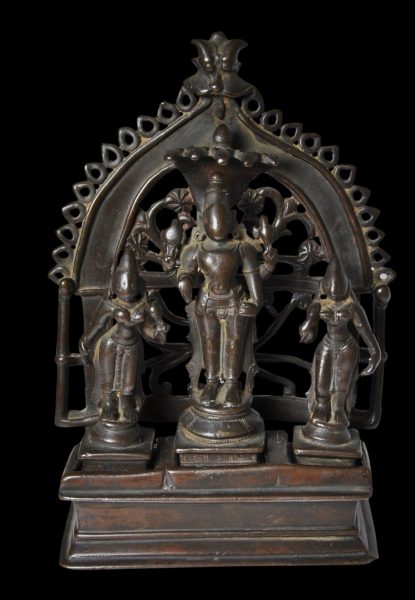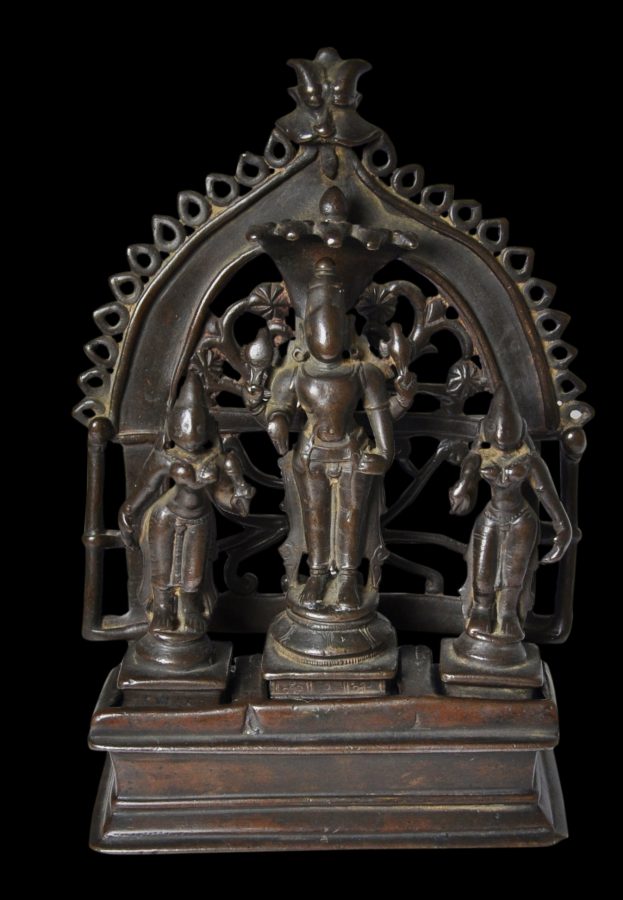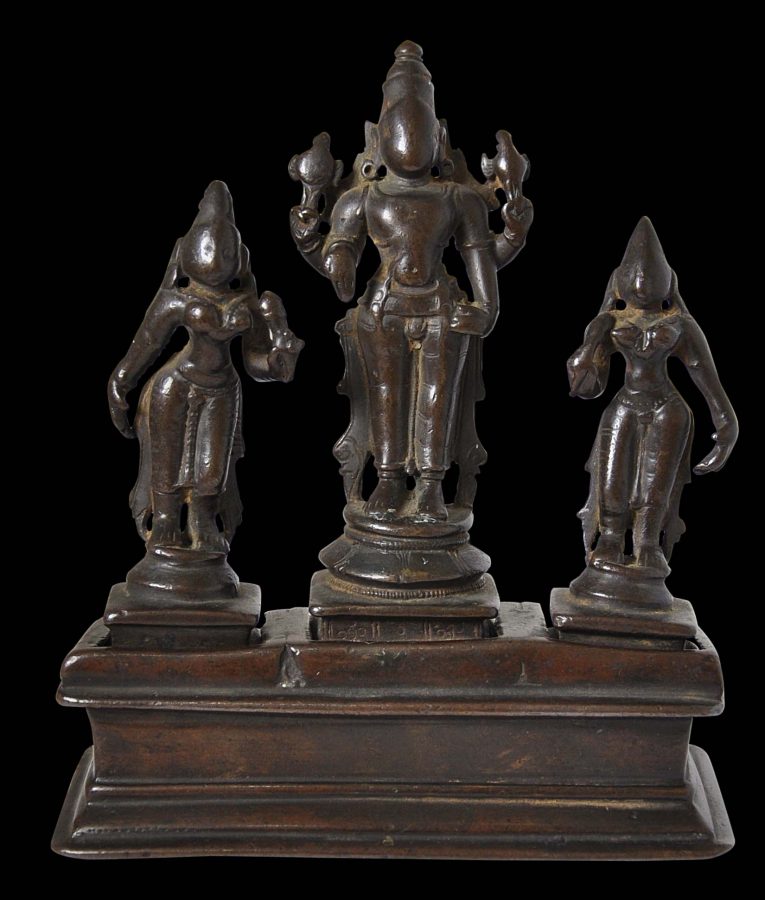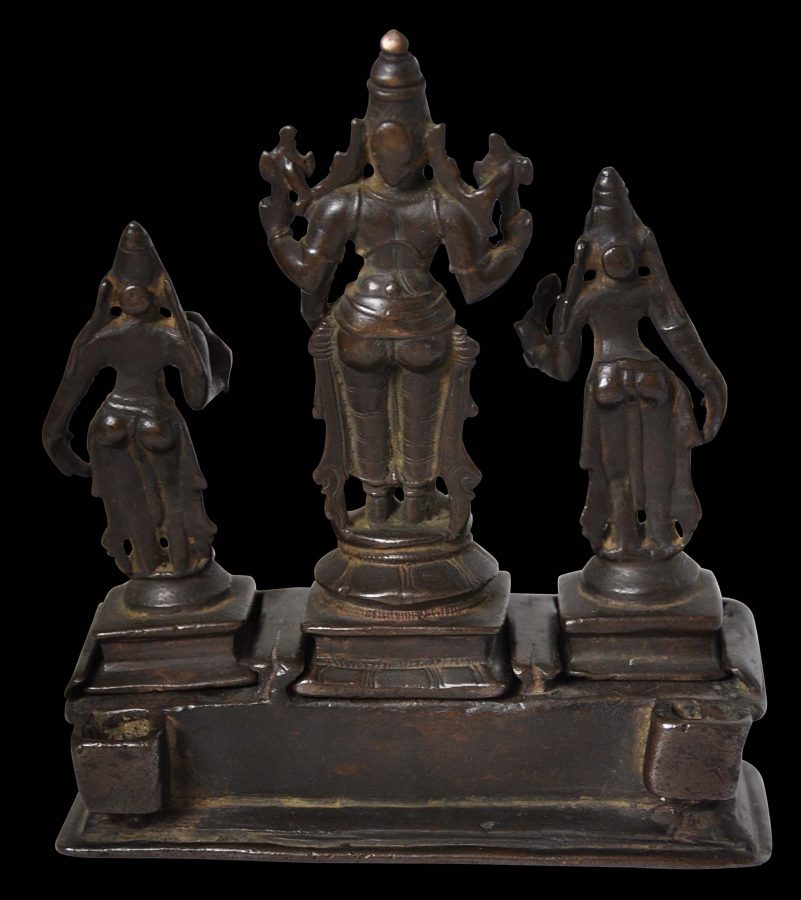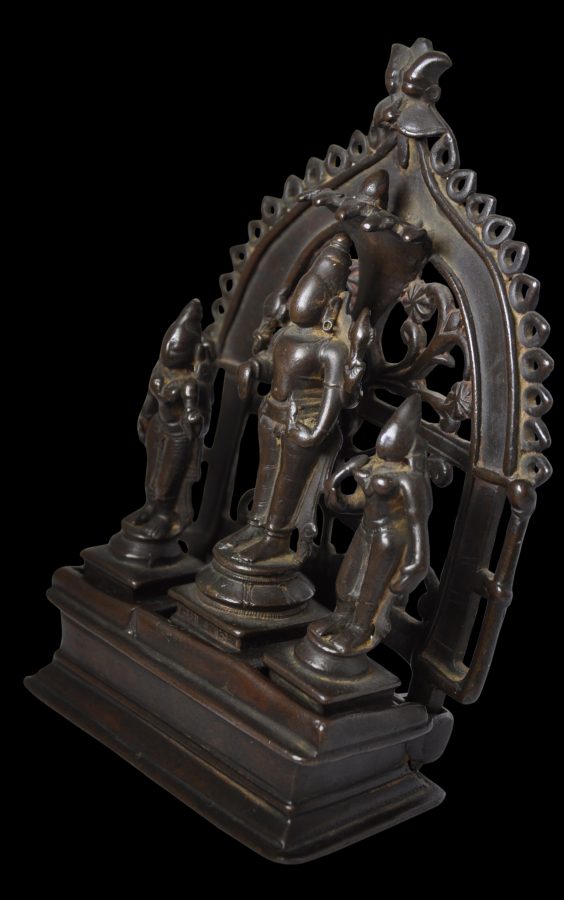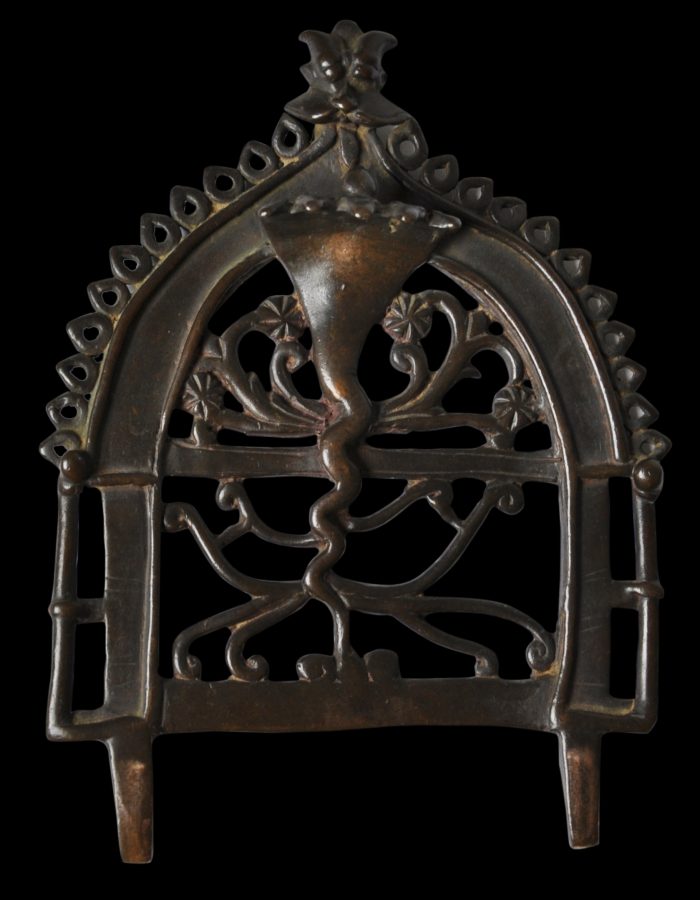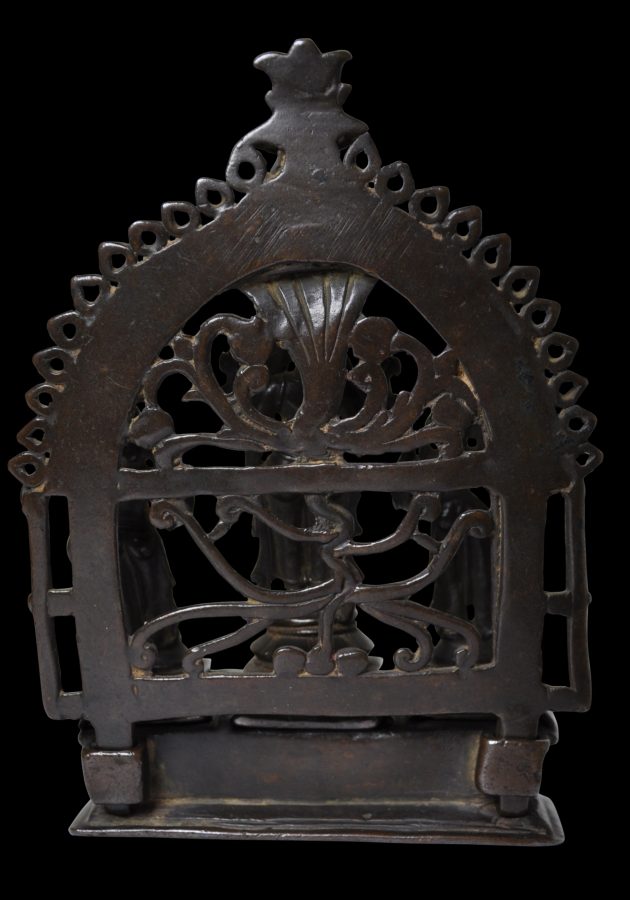Genuinely old, complete and matched sets of Vishnu and his two consorts, Bhu Devi and Sri Devi, are not often encountered now. Over time, the members of the trio tended to have become separated. The threesome here has stayed together with the help of their platform into which each of the three slot in, and also the aureole or backing plate which also fits into the stand.
Vishnu stands at the centre with the wheel (chakra) in his upper right hand and a conch (shankha) in his upper left hand. The lower left hand is in the katyavalambita gesture, and the right has the varada gesture.
Sri Devi is shown in her usual position on the right of Vishnu. She holds in her left hand a lotus stem with the lotus flower open, and has a horizontal breast band (kucha-bandha). These are her identifying attributes.
Bhu Devi stands on Vishnu’s left. She holds in her right hand a lotus stem with the bud still closed, and she does not wear a breast band – these two attributes being identifying attributes allowing the image’s differentiation from Sri Devi.
The aureole or backing is decorated with sinuous open-work and a multi-headed hooded cobra which rises away from the backing plate to provide a covering for Vishnu. The stand is then topped by a protective kurtimukha face. The stand is also bordered with stylised flame-like edging.
Originally, the set would have adorned a household altar of a relatively wealthy Hindu household. The woman of the house would have tended the images each day, cleaning them and providing them with offerings. This puja use has given the set a dark chocolate patina and ample wear.
References
Mitchell, A.G., Hindu Gods and Goddesses, UBSPD, 1982.


